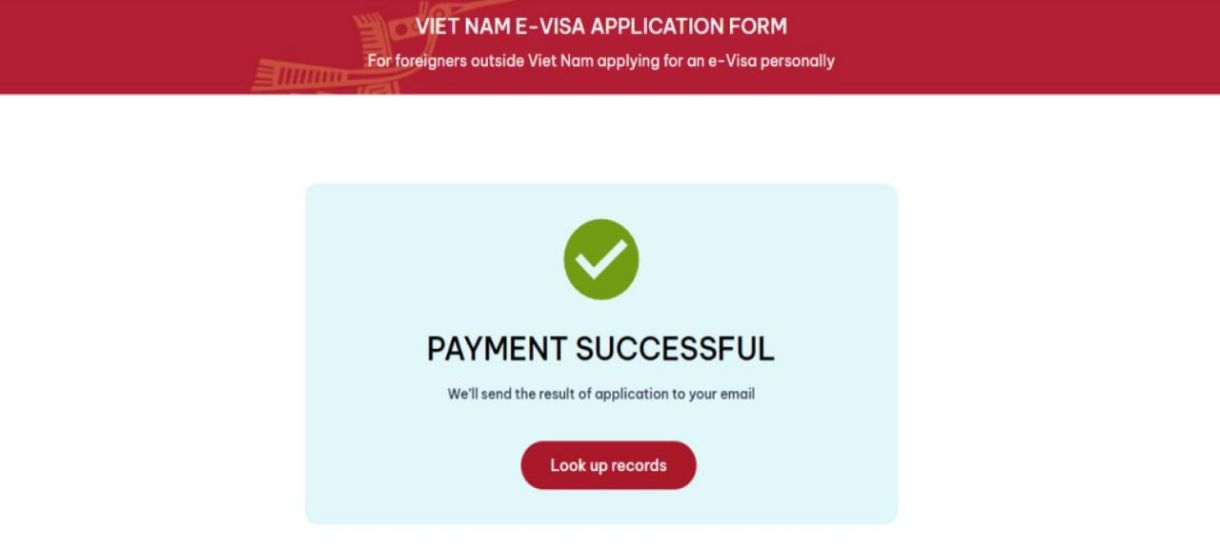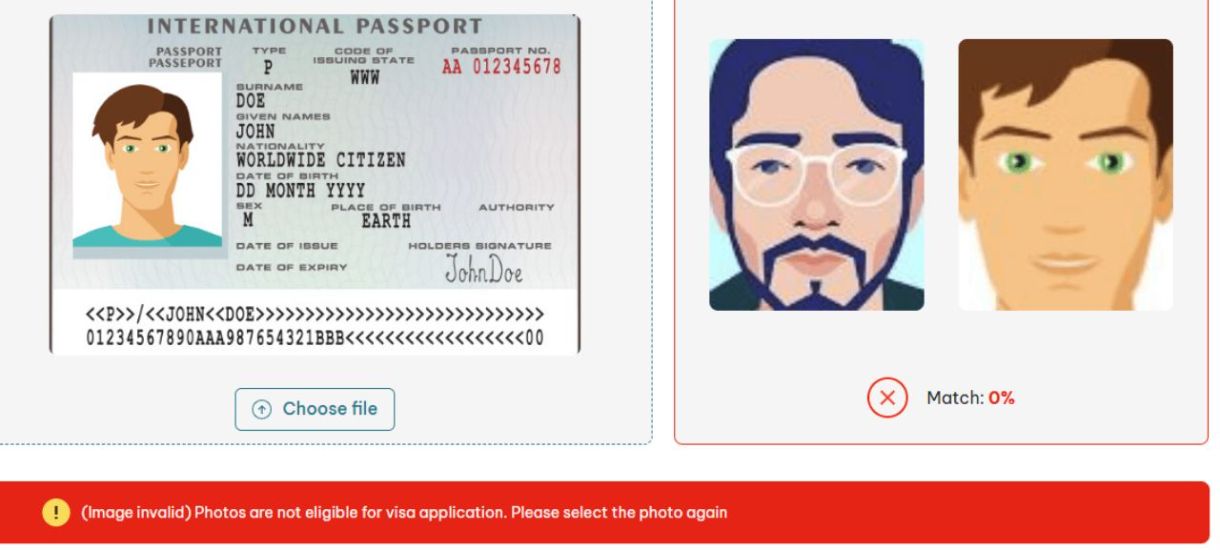Everything About Applying For A Vietnam E-visa [Updated 2025]
Applying for a Vietnam E-visa isn’t complicated or time-consuming, but it definitely helps to be prepared. Here's everything you need to know.
Planning a trip to Vietnam? One of the first things you'll need is a valid visa, and the E-visa is the easiest way to get started. In this blog, we’ll walk you through everything you need to know about Vietnam’s E-visa system. From who is eligible and how long it takes, to what documents you need and how much it costs, we’ll break it all down step by step, making your visa process as easy as possible. Sure enough, by the end, you’ll feel confident, informed, and ready to hit that "Apply" button.
General Information
Before you apply, here are some quick takeaways about Vietnam’s E-visa that you’ll want to keep in mind.
Who issues it? The E-visa is issued directly by the Vietnam Immigration Department, the official government agency in charge of visas and entry into Vietnam.
How long it lasts? The E-visa can be valid for up to 90 days, and you can choose between single entry (enter once) or multiple entries (come in and out multiple times).
Who can apply? To be eligible for an E-visa, you must:
- Be a foreign citizen currently residing abroad who wishes to enter Vietnam.
- Have a valid passport (not a temporary, emergency, BNO, or Diplomatic passport for entry for diplomatic purposes).
- Make sure your passport has at least 6 months beyond your exit date and two blank pages for those all-important entry and exit stamps. You should note that the validity of the electronic visa must be at least 30 days shorter than the passport's validity.
- Not fall under any entry restrictions listed in Article 21 (this usually applies to individuals with security concerns or a history of immigration violations). Check the full terms here.
Who might not need a visa? You might not need a visa if:
- You’re from a country that Vietnam unilaterally exempts from visas, you’ll get 45 days of free stay.
- Your country has a visa waiver agreement with Vietnam. Your stay period depends on that agreement. If no specific time is mentioned in the agreement, you’ll get 30 days of free stay.
Tip: Check the official list of visa-exempt countries here to see if this applies to you.
How much application costs? When applying, you’ll need to pay a non-refundable fee:
- 25 USD for a single-entry visa
- 50 USD for a multiple-entry visa
You’ll pay this fee online during your application. Make sure your payment method supports international transactions.

Source: Vietnam Immigration Department
Steps in applying for a Vietnam E-visa
Now that you’ve checked (and double-checked) that you’re eligible for the E-visa, let’s get into the actual application process.
Step 1: Head to the Electronic Visa Information Page on the Immigration Department website (visit link: https://evisa.gov.vn/). Bookmark it, you’ll need to come back later.
Step 2: Upload your portrait and biometric passport photo. Check the requirements below:
The visa applicant's photo must be a recent 4x6 cm image in JPG or JPEG format, with a file size of less than 2MB. This should be a front-facing image with no hat, no glasses, in formal attire, and with a white background.
The passport data page should be a clear photo with no lost corners. You DON’T need to upload other pages, except the one with your information on it.
Step 3: Fill in the information. After uploading the photos, the system will automatically display personal information from the passport. You need to check and update any incorrect information, then proceed to complete all required fields (marked with *), as well as any optional fields (if any).
Important: You MUST enter and exit Vietnam through one of the official international border gates approved for E-visa holders. Be sure to check the official list of designated entry/exit points here before you book anything or map out your epic Southeast Asia road trip.
Step 4: Give everything one last look, then confirm the declaration information and proceed. After hitting submit, you’ll receive an application code, which will be your new best friend - screenshot it, write it down, or save it somewhere as you’ll need it to check your visa status later.
Step 5: Pay the visa fee to the account specified on the Electronic Visa Information Page. Once your application is submitted, you’ll be directed to the payment page. The fee you pay depends on the type of visa that you’ve just applied for, as mentioned above. Once you’ve finished this step, you’ve done. (Well, your part, anyway).
Please note: While you can submit your application 24/7, the authority only processes it during office hours on working days (Monday to Friday) and Saturday mornings each week (excluding holidays and Tet, as stipulated by law).
Step 6: Sit back, relax, and wait for approval. After submitting your application, use your application code to check the application process, which usually takes 3-7 working days, with results released Monday to Friday, excluding public holidays and Tet.
Step 7: Get your visa! Once approved, head back to https://evisa.gov.vn/, enter your application code, and download your visa. Print a copy and bring it with you, you’ll need to show it when entering Vietnam.
And if you’ve made it this far, congratulations! You’re officially ready to explore Vietnam. Now all that’s left is planning your adventure: Phở in Hanoi, Cholon in Ho Chi Minh city, beaches in Phú Quốc, and maybe a few days off the beaten path.

Source: Vietnam Immigration Department
Common mistakes when applying for E-visa
Even though the Vietnam E-visa process is pretty straightforward, a few small slip-ups can delay or even cancel your application. Here are the most common mistakes travelers make (so you don’t have to):
Leaving out key details on the application form or mistyping personal information. If you’ve ever asked yourself, “Do I really need to fill this in?”, the answer is 100% yes. Immigration officers don’t guess. That seemingly tiny detail (like your middle name or place of birth) could be more important than you think. And since you’ve already made the effort to type it all out, don’t let a typo or a sneaky autocorrect ruin it, leading to your application being delayed or denied. So be nice to your future self: pay attention to double-check everything before you hit submit. That includes writing your name in the correct order as in passport, or using the right date format (in Vietnam, they usually use dd/mm/yyyy.
Uploading the wrong photo. No, they don’t want your favorite beach selfie or a photo of you and your cat. Make sure you upload your portrait, meeting all requirements from the size (2MB, JPG or JPEG format), white background, front-facing, no hat, no glasses, and formal clothes.
Use a passport that’s close to expiration. Vietnam doesn’t mess around with passport rules. Your passport must be valid for at least 6 months beyond your exit date and needs at least 2 blank pages, or your application is toast. So, if your passport has less than 30 days left or is out of blank pages, take a break, get it renewed, then come back.
Forget to apply for your kids who have their own passports. No free rides, even for tiny travelers. Apply for them just like you would for yourself.
Choose the wrong entry port. This one trips up a lot of people: the Vietnam E-visa is only valid for the exact entry point you select during the application. If you decide to switch it up last minute and fly into a different airport or border gate, you’ll likely be denied entry and have to reapply. So, moral of the story: know where you’re arriving, and stick to it.
Applying too late when it’s peak time. This one happens more often than you'd think: people plan their trip down to the Bánh Mì stand they'll hit first, but somehow forget the visa. Here’s the thing: even though the E-visa usually takes 3-7 working days, that doesn’t include weekends, Vietnamese public holidays, or Tet (Lunar New Year). And trust us, Tet slows down everything, we’re talking nationwide nap mode. So if you apply right before Tet, thinking “Oh it’ll come in a few days”, big NOPE. Apply right away the moment you have decided to visit Vietnam, and, of course, have understood the process of E-visa application process.

Source: Vietnam Immigration Department
FAQ
Got questions? You’re not alone. Here are some of the most common things travelers wonder about when applying for a Vietnam E-visa.
Q: Can I apply for an electronic visa while I am in Vietnam?
A: No, E-visas are issued to foreigners entering Vietnam, not applicable to foreigners currently residing in Vietnam.
Q: If I enter Vietnam and plan to temporarily reside in multiple locations, how do I declare my temporary addresses?
A: Just provide the first address where you’ll be staying. No need to list every hotel or homestay on your route.
Q: When’s the best time to apply?
A: You can apply as early as 1 year and 30 days before your arrival. So if you’re a planner, go for it early, especially around holidays.
Q: Do I need confirmed hotel and flight bookings?
A: Not exactly. The system asks for your intended entry and exit dates, so it’s best to align those with your actual flight. You don’t need to upload tickets, but mismatched or unrealistic dates may cause delays.
Q: Do I need to print my Vietnam E-visa?
A: Yes! Print it out and bring a physical copy with you, you’ll need to show it at the airport. A digital backup on your phone is smart too, just in case.
Q: Can I extend my stay once I’m in Vietnam?
A: Unfortunately, no. If you want more time, you’ll need to exit the country and reapply for a new E-visa. Overstaying can lead to fines, deportation, or even entry bans, so don’t push your luck.
Q: What if my application is rejected?
A: Don’t panic. Just resubmit, but make sure to double-check everything this time around.




